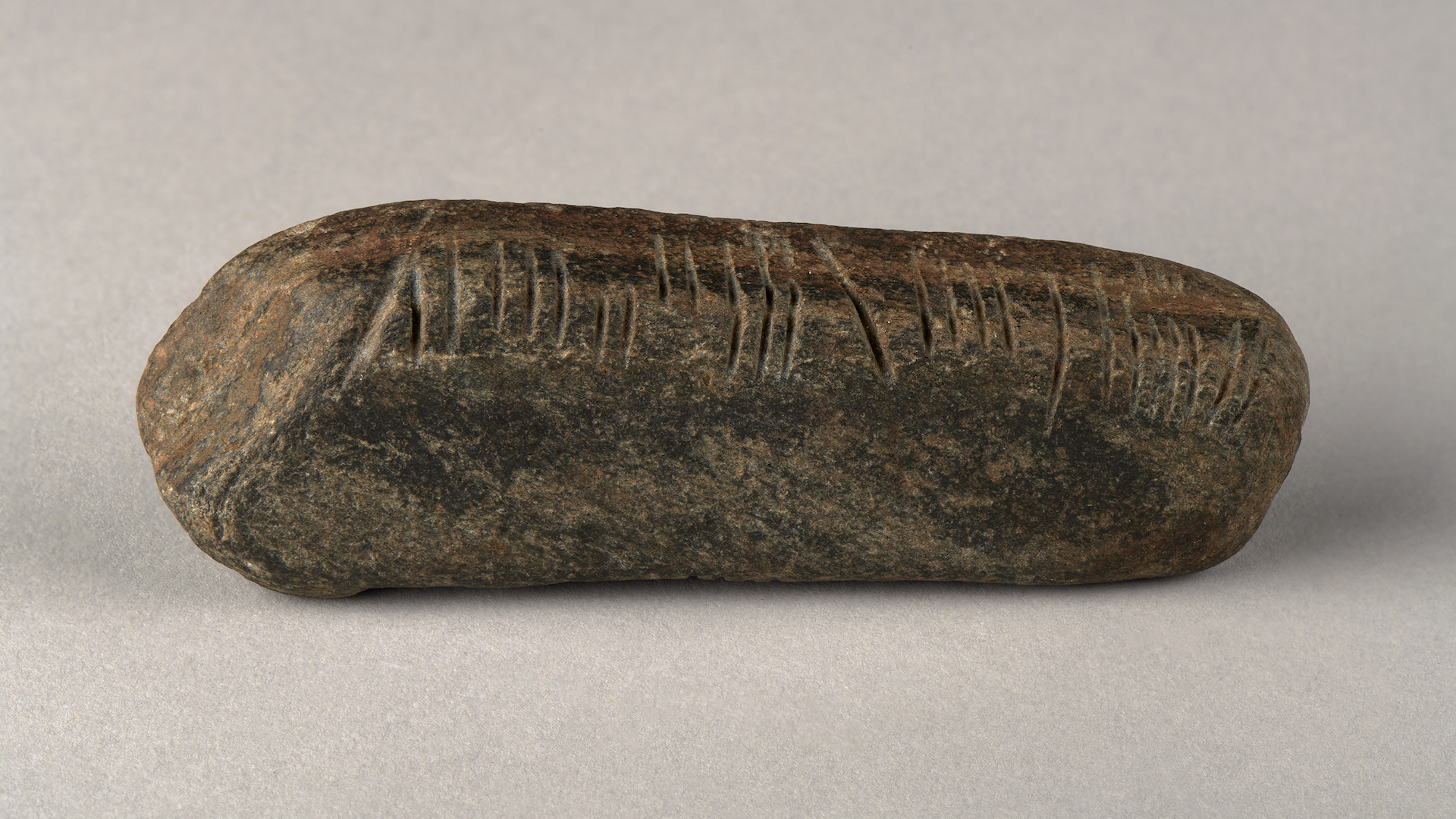
A man in England weeding his garden has made a once-in-a-lifetime discovery: a stone inscribed with a 1,600-year-old message in a rare Irish alphabet.
At first glance, the inscription looks like a series of vertical lines cut into the chocolate-bar-size stone. But these lines are actually an inscription in ogham, an alphabet used to write the early Irish language after the fourth century and Old Irish from the sixth to the ninth centuries. Its discovery has baffled archaeologists, who can't explain how it came to be in the central English city of Coventry.
Ideas include that it might have been a commemorative object, something carried by Irish Christian monks on a mission to convert the pagan Mercians of the area, or a way of introducing a traveling Irish tradesman to others.
"There's a lot of possibilities as to why it came over," Teresa Gilmore, an archaeologist at the Birmingham Museums Trust, told Live Science. "This is one of the things about some of the amazing finds that turn up — they often create more questions than answers."
Gilmore is a finds liaison officer for the British Museum's Portable Antiquities Scheme, which learned of the inscribed stone in 2020.
Related: Rare medieval script discovered on stone carved by Scotland's 'Painted People'
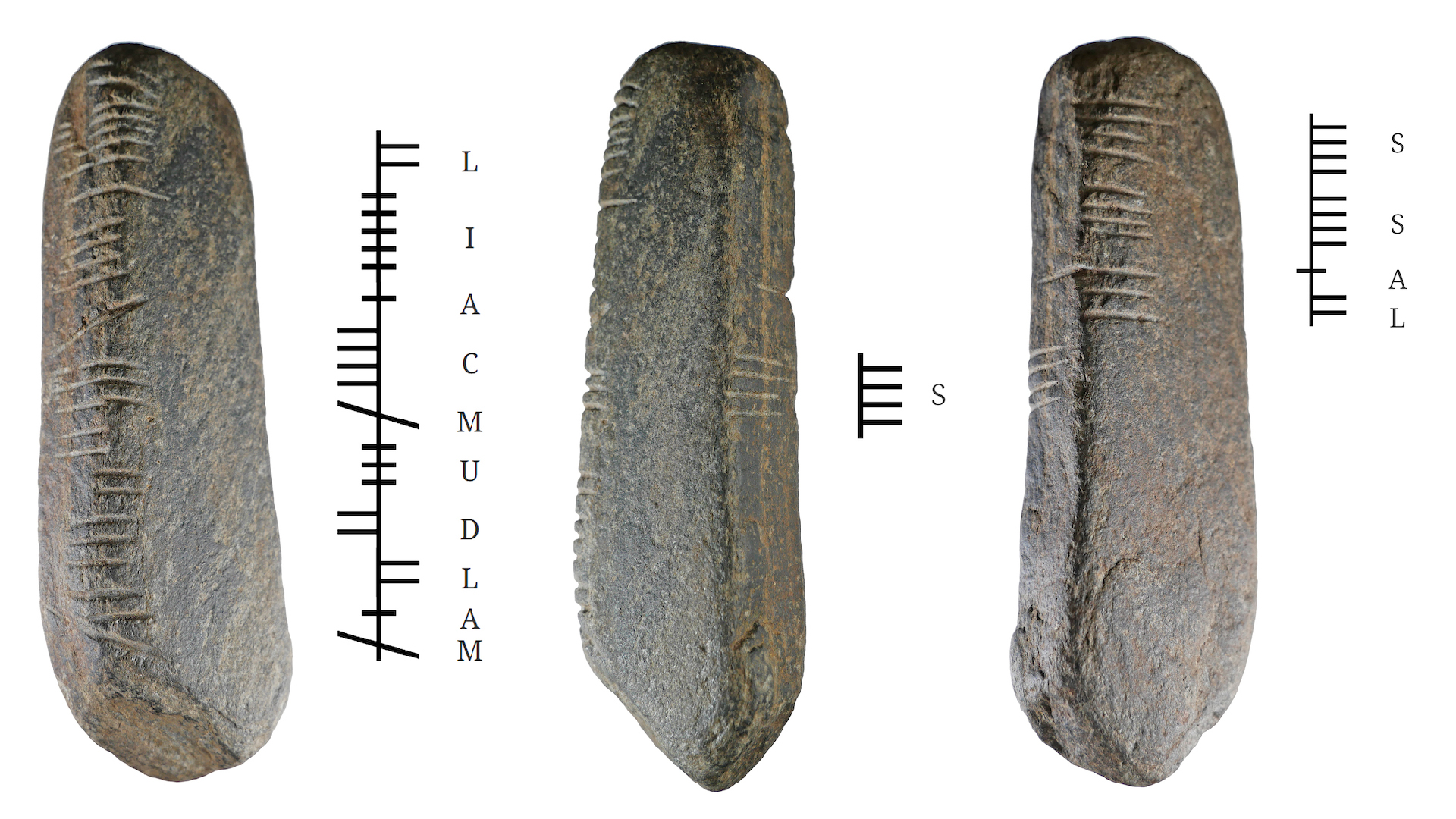
Geography teacher Graham Senior found the stone while he was weeding a flowerbed in his garden in Coventry during the COVID lockdown in 2020. "It caught my eye as I was clearing an overgrown part of the garden," he said in a statement. "At first, I thought it was some kind of calendar. Finding out later it was an ogham stone and over 1,600 years old was incredible."
Senior made contact with the Portable Antiquities Scheme, which records historical objects discovered in England and Wales; Gilmore then investigated the stone and sought expert advice about the find.
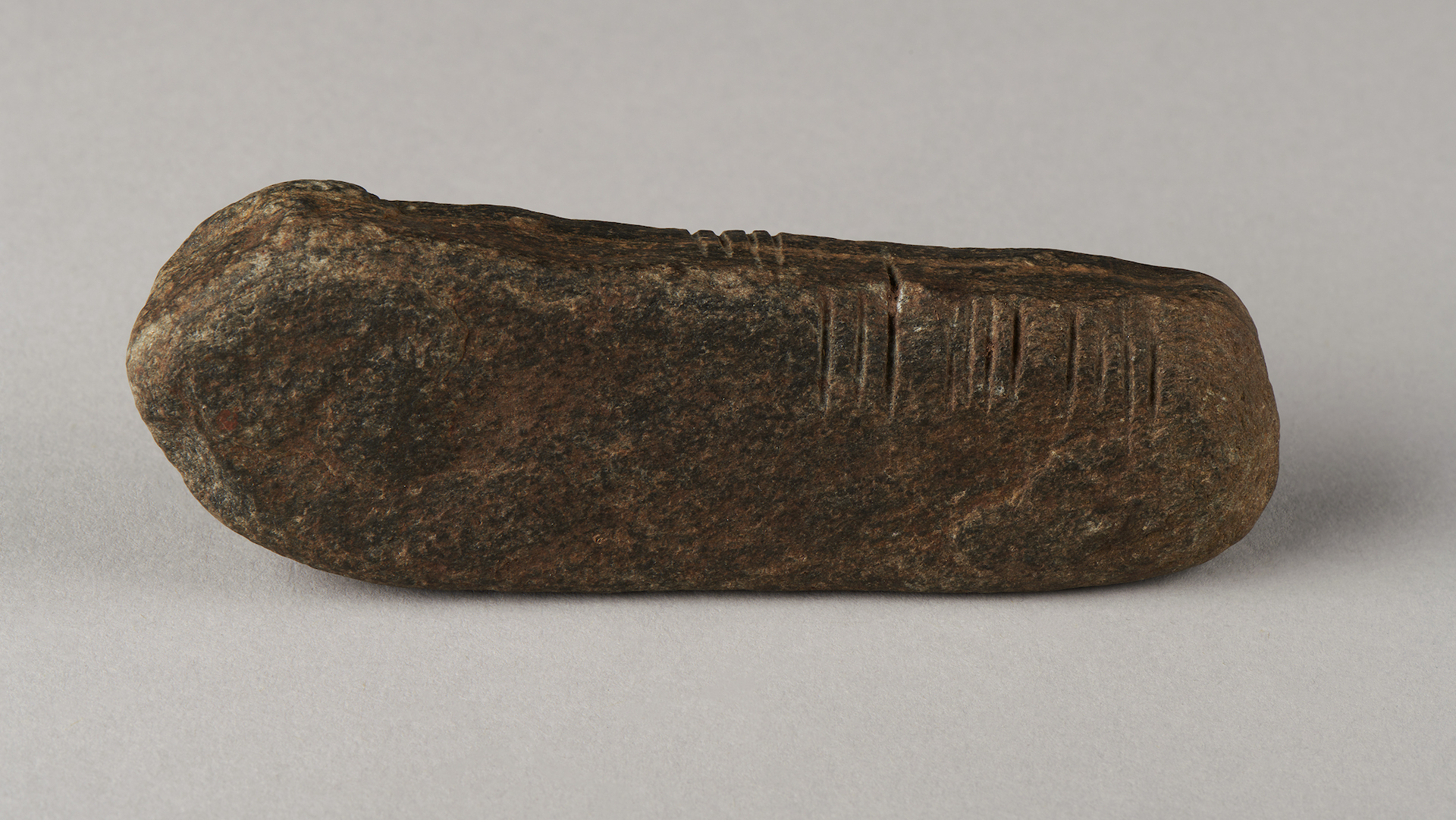
Irish script
Gilmore's efforts paid off when photographs of the stone were seen by University of Glasgow historian Katherine Forsyth, who confirmed the lines on it were an inscription in an early style of ogham. Forsyth traveled to Coventry a few months ago to take photographs for a digital 3D model and partially translated the inscription as "Maldumcail/ S/ Lass."
Gilmore explained that the first part relates to a person's name — "Mael Dumcail" — but that the meaning of the rest is not yet known.
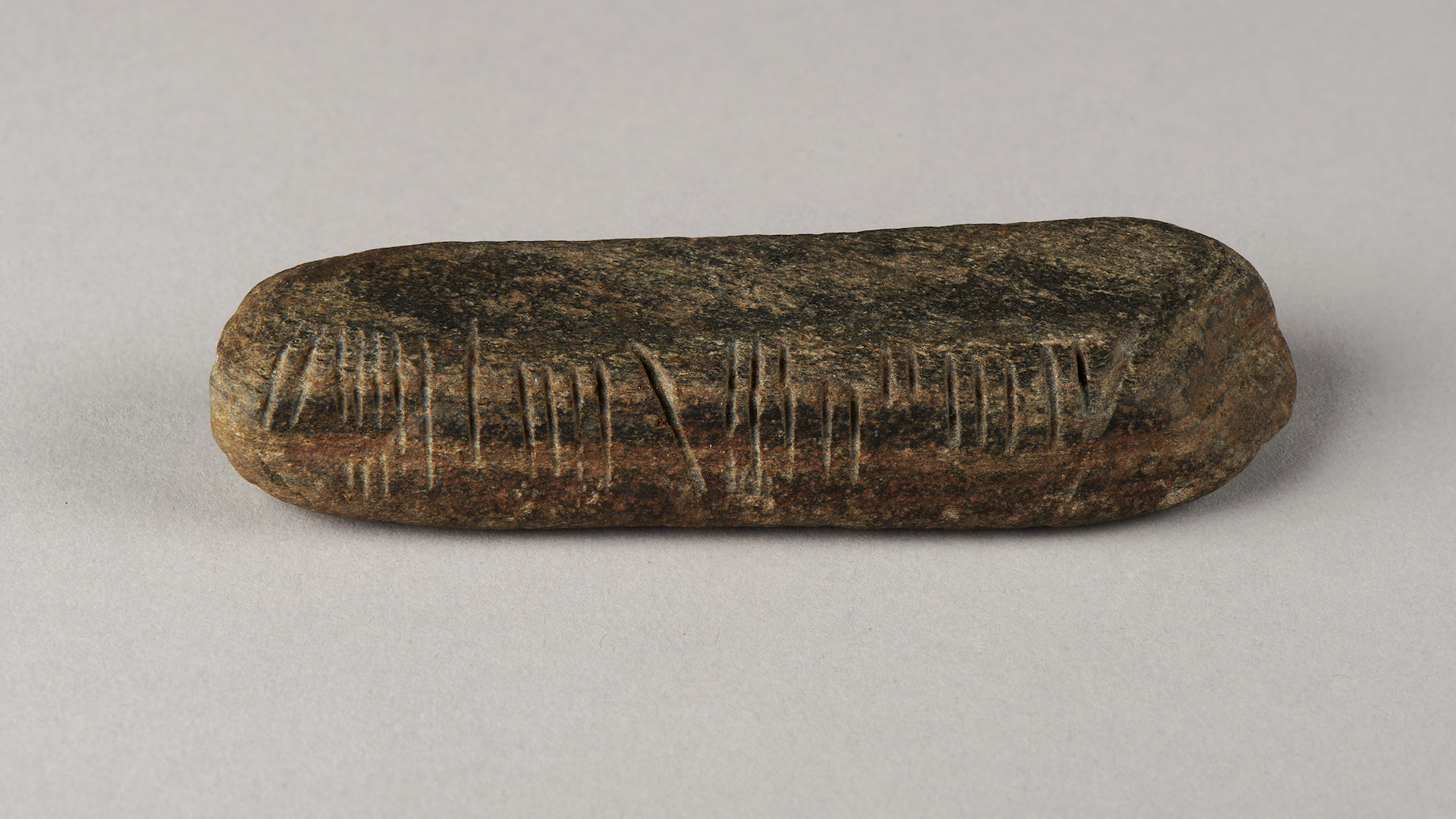
The object is made of sandstone. It weighs about 5 ounces (139 grams) and is about 4 inches (11 centimeters) in length. The lines of the inscription are cut into three of the corners between the stone's faces. This was a common way of writing ogham before the introduction of vellum (scraped calfskin), parchment (scraped sheepskin) and paper.
Ogham has some similarities to Norse runes, which also consist of straight lines. But ogham uses only parallel lines in groups of up to five, and it seems to have been developed independently to write in Irish. Ogham was superseded by the Insular script, a medieval alphabet that was once used throughout Britain, mainly for writing Latin.
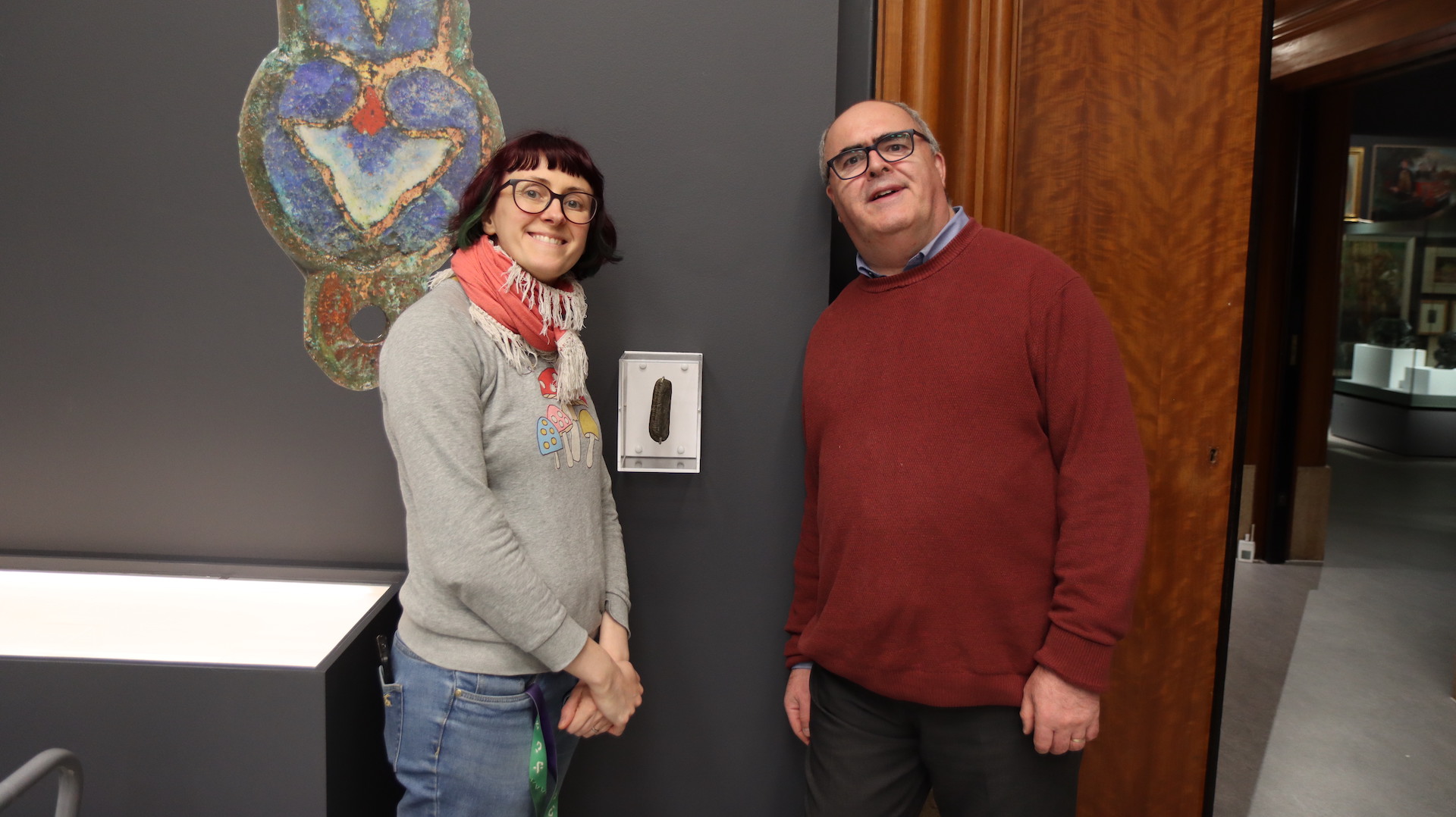
Cause célèbre
The stone is a rare find. Only about 400 ogham inscriptions are known (compared with several thousand Norse runic inscriptions), and only 10 have been found in England, Gilmore said.
Most are from Ireland, but some are from Celtic regions of Britain such as Wales, Scotland and Cornwall, she said.
Meanwhile, Senior has donated his ogham stone to the Herbert Art Gallery and Museum in Coventry, where it will go on display until April 2025. The museum also plans to thoroughly investigate the stone and its inscription.
"We might never know how Mael lost the stone and how it ended up in a garden in Coventry, but I hope future research will reveal more," Herbert museum curator Ali Wells said in the statement.







